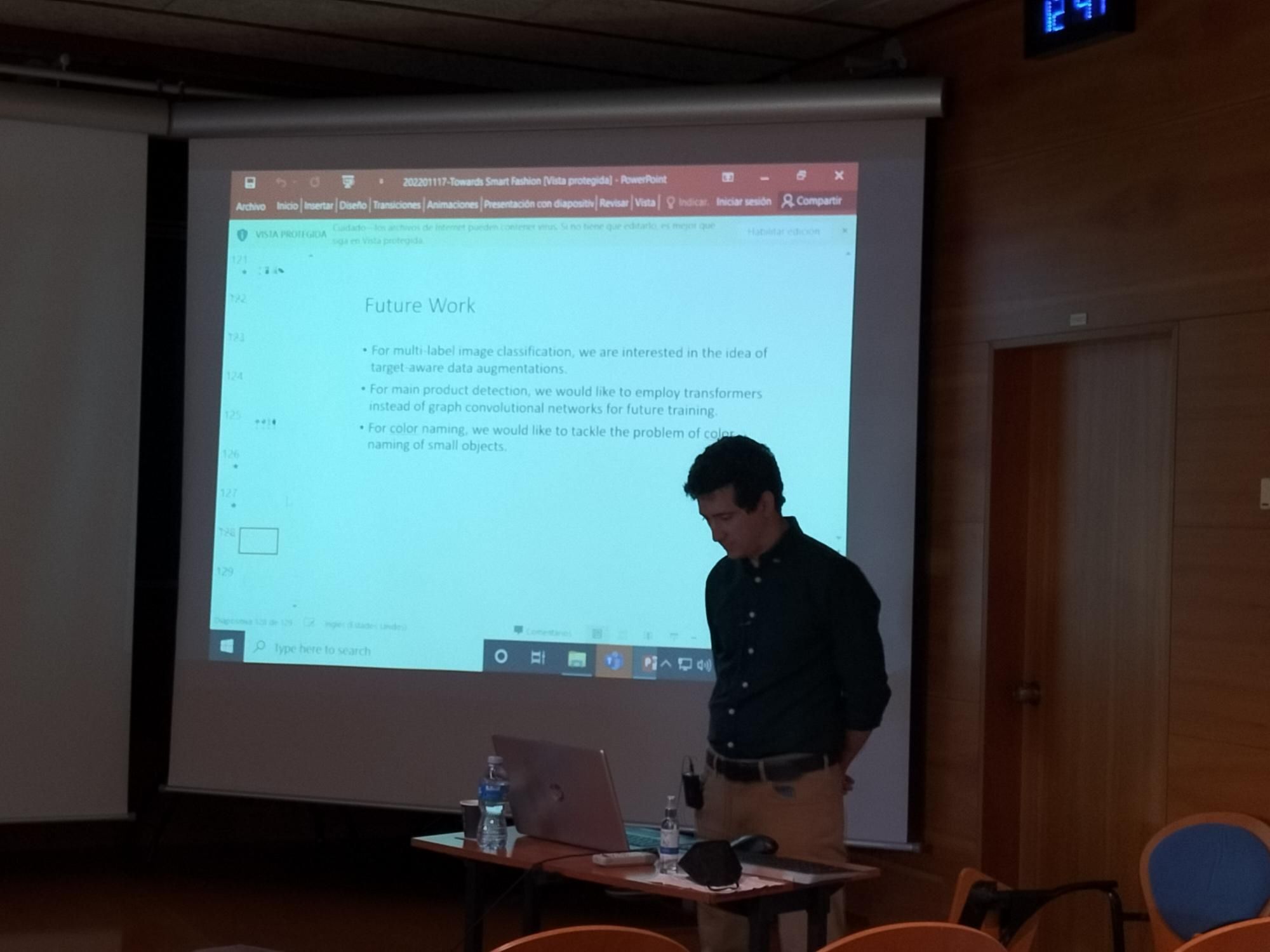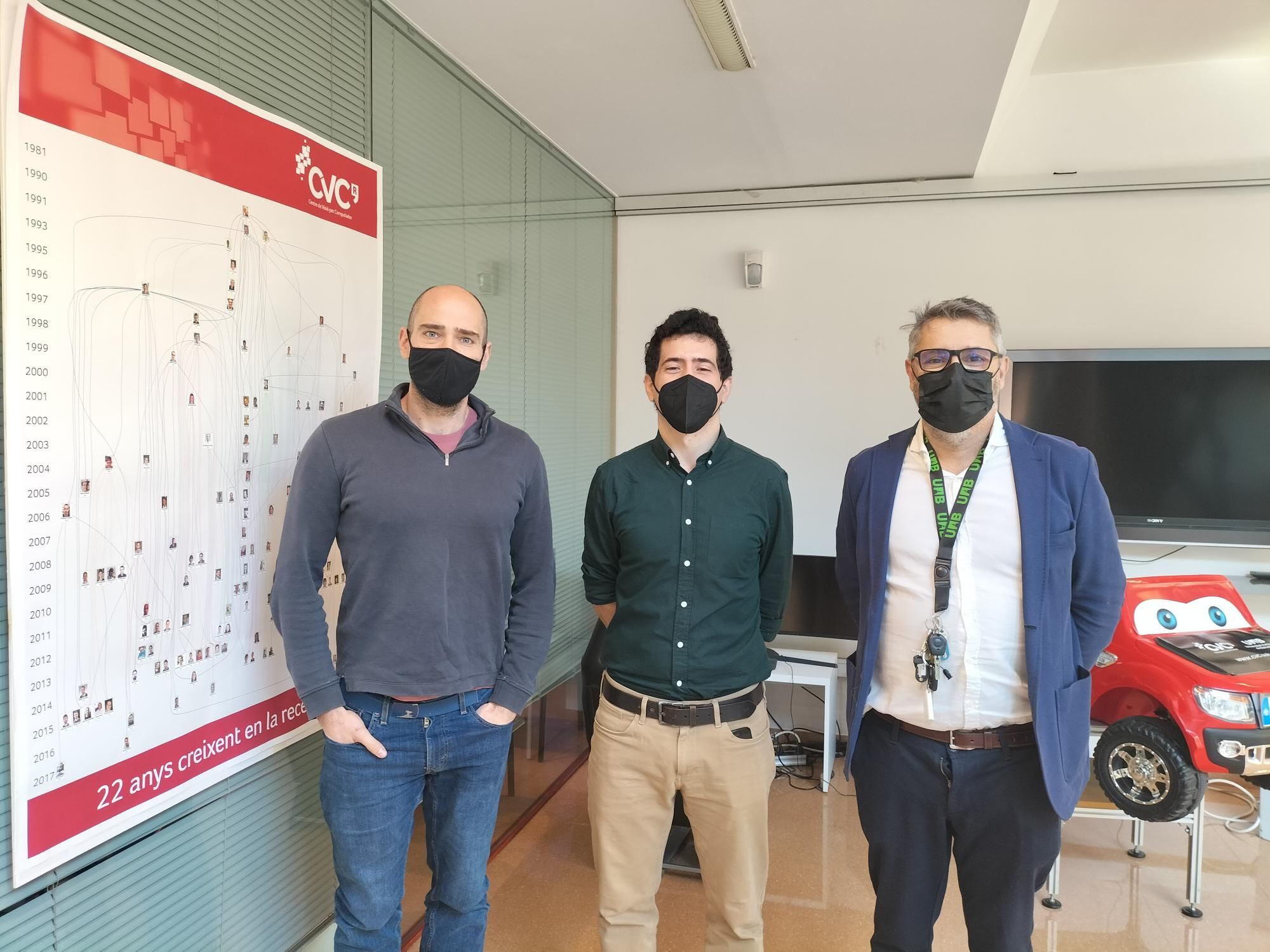
CVC has a new PhD on its record!
Pioner Award 2022
Vacit Oguz Yazıcı successfully defended his dissertation on Computer Science on January 18, 2022, and he is now Doctor of Philosophy by the Universitat Autònoma de Barcelona. Dr. Yazıcı was recognised with a Pioner Award for the commercial contribution of his thesis to the fashion industry by the CERCA Institute – Centres de Recerca de Catalunya – on December 23, 2022.
What is the thesis about?
Artificial intelligence is innovating the fashion industry by proposing new applications and solutions to the problems encountered by researchers and engineers working in the industry. In this thesis, we address three of these problems. In the first part of the thesis, we tackle the problem of multi-label image classification which is very related to fashion attribute recognition. In the second part of the thesis, we address two problems that are specific to fashion. Firstly, we address the problem of main product detection which is the task of associating correct image parts (e.g. bounding boxes) with the fashion product being sold. Secondly, we address the problem of color naming for multicolored fashion items.
The task of multi-label image classification consists in assigning various concepts such as objects or attributes to images. Usually, there are dependencies that can be learned between the concepts to capture label correlations (chair and table classes are more likely to co-exist than chair and giraffe). If we treat the multi-label image classification problem as an orderless set prediction problem, we can exploit recurrent neural networks (RNN) to capture label correlations. However, RNNs are trained to predict ordered sequences of tokens, so if the order of the predicted sequence is different than the order of the ground truth sequence, there will be penalization although the predictions are correct. Therefore, in the first part of the thesis, we propose an orderless loss function which will order the labels in the ground truth sequence dynamically in a way that the minimum loss is achieved. This results in a significant improvement of RNN models on multi-label image classification over the previous methods.
However, RNNs suffer from long term dependencies when the cardinality of set grows bigger. The decoding process might stop early if the current hidden state cannot find any object and outputs the termination token. This would cause the remaining classes not to be predicted and lower recall metric. Transformers can be used to avoid the long term dependency problem exploiting their self-attention modules that process sequential data simultaneously. Consequently, we propose a novel transformer model for multi-label image classification which surpasses the state-of-the-art results by a large margin.
In the second part of thesis, we focus on two fashion-specific problems. Main product detection is the task of associating image parts with the fashion product that is being sold, generally using associated textual metadata (product title or description). Normally, in fashion e-commerces, products are represented by multiple images where a person wears the product along with other fashion items. If all the fashion items in the images are marked with bounding boxes, we can use the textual metadata to decide which item is the main product. The initial work treated each of these images independently, discarding the fact that they all belong to the same product. In this thesis, we represent the bounding boxes from all the images as nodes in a fully connected graph. This allows the algorithm to learn relations between the nodes during training and take the entire context into account for the final decision. Our algorithm results in a significant improvement of the state-of-the-art.
Moreover, we address the problem of color naming for multicolored fashion items, which is a challenging task due to the external factors such as illumination changes or objects that act as clutter. In the context of multi-label classification, the vaguely defined lines between the classes in the color space cause ambiguity. For example, a shade of blue which is very close to green might cause the model to incorrectly predict the color blue and green at the same time. Based on this, models trained for color naming are expected to recognize the colors and their quantities in both single colored and multicolored fashion items. Therefore, in this thesis, we propose a novel architecture with an additional head that explicitly estimates the number of colors in fashion items. This removes the ambiguity problem and results in better color naming performance.
Keywords: multi-label image classification, orderless recurrent models, transformers for multi-label classification, main product detection, graph convolutional networks, color naming.















